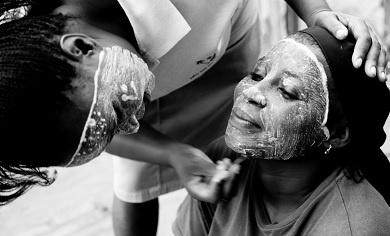Mozambique: Beira Airport renovation to be completed by year-end, says Airports Authority
Culture – Traditional ways of life are preserved in Mozambique – varying from province to province. This cultural kaleidoscope provides visitors from every where with a series of experiences and precious memories.

Traditional ways of life are preserved in Mozambique – varying from province to province. This cultural kaleidoscope provides visitors from every where with a series of experiences and precious memories.
Makonde people of Cabo Delgado in the north-east, are known for their fearlessness and initiation rites. For male initiation, participants dance with masks “MAPICO.” The body is tattooed and the teeth are sharped only for aesthetic purposes. The Makonde are also talented artisans producing fine wood – primarily mahogany, ebony and ironwood – and ivory sculpture which usually depict the stories of previous generations.
Music is very important for the people of Niassa living in the sparsely populated northwest. They use wind instruments made of dry and hollow gourds, producing a sound like a trumpet. A band musicians play instruments of different sizes. Macuas women, in Nampula Province, paint their faces with “muciro,” a stratum of white root. They also make straw baskets, mats and other items as well as ebony and clay sculptures. The traditional and spicy food of Zambezia is highly appreciated.
The Zambezian grilled chicken with coconut milk, is a delicacy. The agility of Nhau dancers from Tete province is much admired. At the sound of thumping beats, they dance holding huge and scary wooden masks. For Chopes of Inhambane province “Timbila” is the name of a percussion instrument and dance. The instrument is similar to a xylophone. During the dance, up to 23 different sizes of instruments are played. The Chope also use “mbira” made of strips of metal attached to a hollow box and played with the fingers.











Leave a Reply
Be the First to Comment!
You must be logged in to post a comment.
You must be logged in to post a comment.